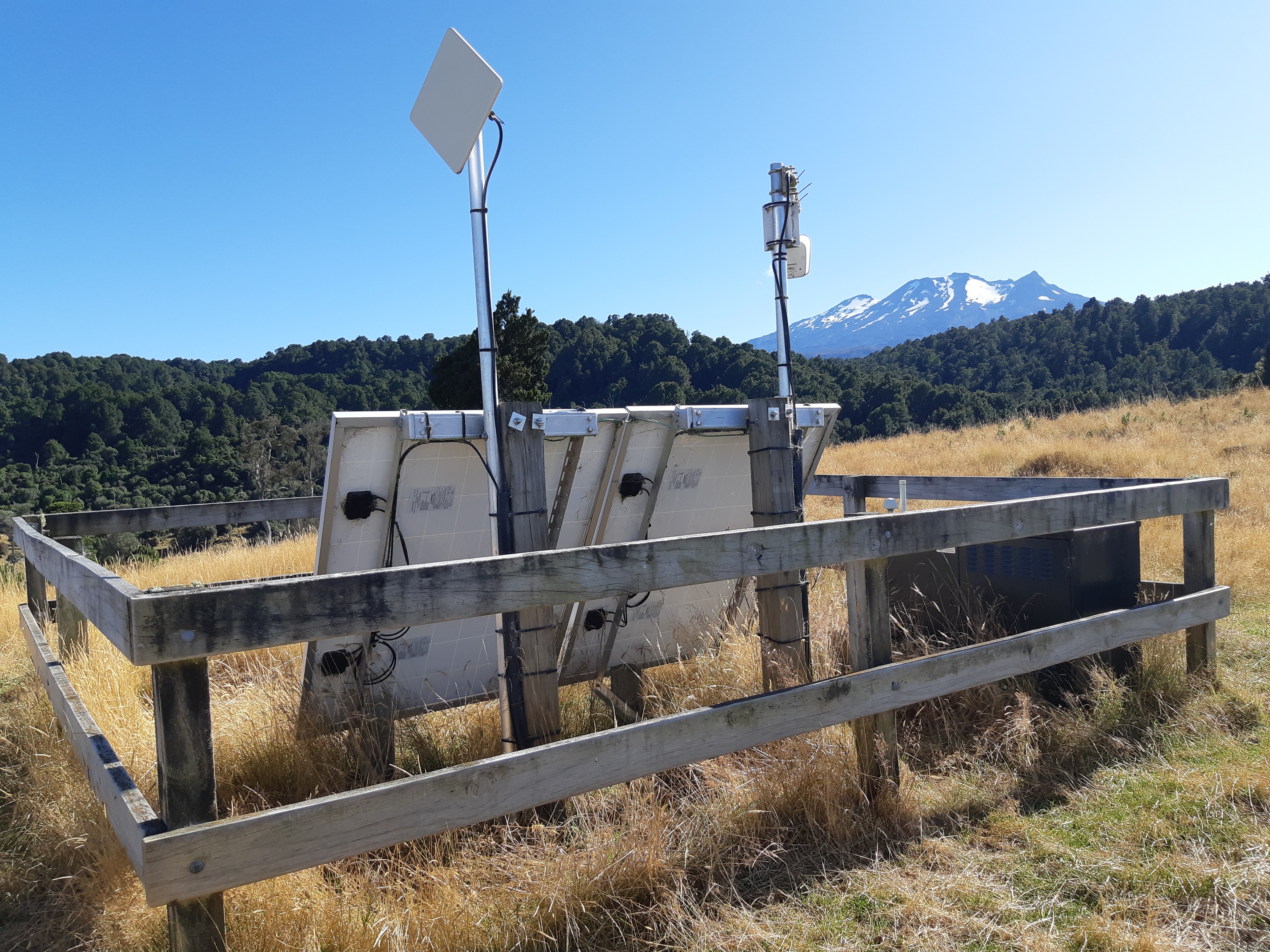Volcano Cameras
It is not possible to visit a volcano every day, so we now use remotely operated cameras to supplement our observations. The cameras we use are specifically designed for remote operation. They are setup to take an image very second and then transmit an image every 10 minutes to our data centres and website, while storing the 1 second data for about a week in case we find we need it.
Several of the cameras are some distance from the volcano, some are based at locations where we have power and communications. However, some of the cameras in remote locations such as Tongariro National Park are solar powered. The images are then transferred to our data centres and onto the website across internet data links. Our cameras have both daylight and low light cameras installed, allowing pictures to be taken at night when there is enough ambient light such as from a full moon. If we wish to see images during unrest or an eruption, we can download the high data rate images as needed.
We are thankful for the organisations who support us in using their properties and land to house our equipment.
See here for more information on How we monitor volcanoes in New Zealand.

